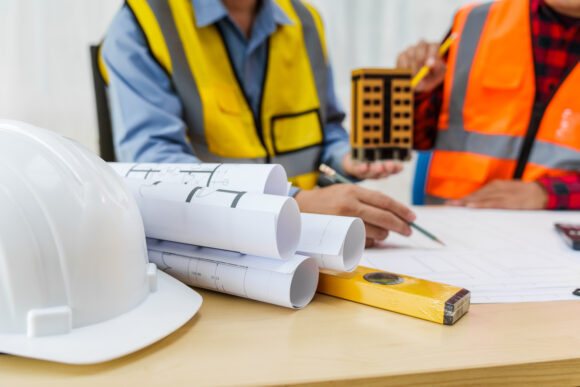In an era where billion-dollar disasters are becoming the norm, one truth stands above the wreckage: strong building codes save buildings – and lives. Yet despite mounting risks, the U.S. remains caught in a paradox. We have the knowledge and tools to build safer structures, but adoption and enforcement lag.
In fact, according to FEMA, 65% of U.S. counties, cities and towns have not adopted modern building codes.
It’s time to reframe the narrative around modernizing building codes. Building code compliance isn’t red tape; it’s a frontline defense. But key stakeholders have outdated perceptions of modernized building codes. Couple that with cost concerns and a lack of urgency, the progress of updating building codes to meet the enhanced severe weather events we are facing is in danger of stalling.
To protect people and property, keep businesses open and communities intact and most importantly, save lives, we must position building codes as a strategic investment in long-term resilience – not as a regulatory burden.
The Risk Reality
The frequency and severity of natural disasters are rising, with property owners deeply concerned about the future. Since 2023, concern about severe weather has increased significantly in wildfire (+28 points) and hurricane (+16 points) zones. A recent survey from Nationwide of commercial property owners revealed that one in three of them have already experienced damage from a natural disaster, increasing to nearly two in three in hurricane-prone regions.
But as recent events show us, severe weather isn’t just a coastal problem – inland risks like wind and wildfires are rising, too. Structural damage, business interruption and water intrusion are top concerns.
The Code Compliance Paradox
Nationwide’s survey revealed that a staggering 100% of property stakeholders and 60% of insurance agents surveyed agree that building code compliance is critical. Yet only 39% of stakeholders say they’ve upgraded their property above current code requirements – a 13 point drop from 2023. Despite wide familiarity with IBHS FORTIFIED standards, upgrades remain uncommon due to issues like the time needed to research options (64%) and high costs (62%).
However, adoption of these enhanced building standards has made a big difference in many instances. Consider the example of Strengthen Alabama Homes, a program that has successfully reframed building codes as a strategic investment rather than a regulatory obligation. This initiative demonstrates the benefits of adopting stronger building codes, including enhanced resilience and reduced recovery costs. Other states should follow Alabama’s leadership in this field and adopt similar programs.
Mindset Shift: From Obligation to Opportunity
Building codes should be seen not just as mandatory, but as mission critical for business survival. Codes support physical resilience as well as business continuity, reduced downtime and lower recovery costs. Agents and stakeholders increasingly view compliance as a factor in insurance pricing and risk assessment.
Bridging the Gap
To bridge the gap between awareness and action, we need real solutions: streamlined decision tools, educational resources and cost-share programs. Emphasizing the cost-benefit is crucial. For instance, it took 100% of property owners surveyed up to six months and $10,000 to recover from damage caused by severe weather events. Strong codes can reduce this burden dramatically. The numbers don’t lie – strong codes don’t slow us down; they keep us standing.
Nationwide is a proponent of modernizing building codes to protect our customers and our communities. We must advocate for stronger codes and support initiatives that make compliance easier and more affordable. By doing so, we can ensure that our communities are better prepared for the challenges ahead.
Was this article valuable?
Here are more articles you may enjoy.



 Product Liability Verdicts Are on the Rise but There Are Ways to Avoid Them
Product Liability Verdicts Are on the Rise but There Are Ways to Avoid Them  Dozens of State Attorneys General Urge Congress Not to Block AI Laws
Dozens of State Attorneys General Urge Congress Not to Block AI Laws  Viewpoint: Agentic AI Is Coming to Insurance Industry – Much Faster Than You Think
Viewpoint: Agentic AI Is Coming to Insurance Industry – Much Faster Than You Think  Baldwin Group to Buy CAC Group for About $1B in Cash and Stock
Baldwin Group to Buy CAC Group for About $1B in Cash and Stock 


